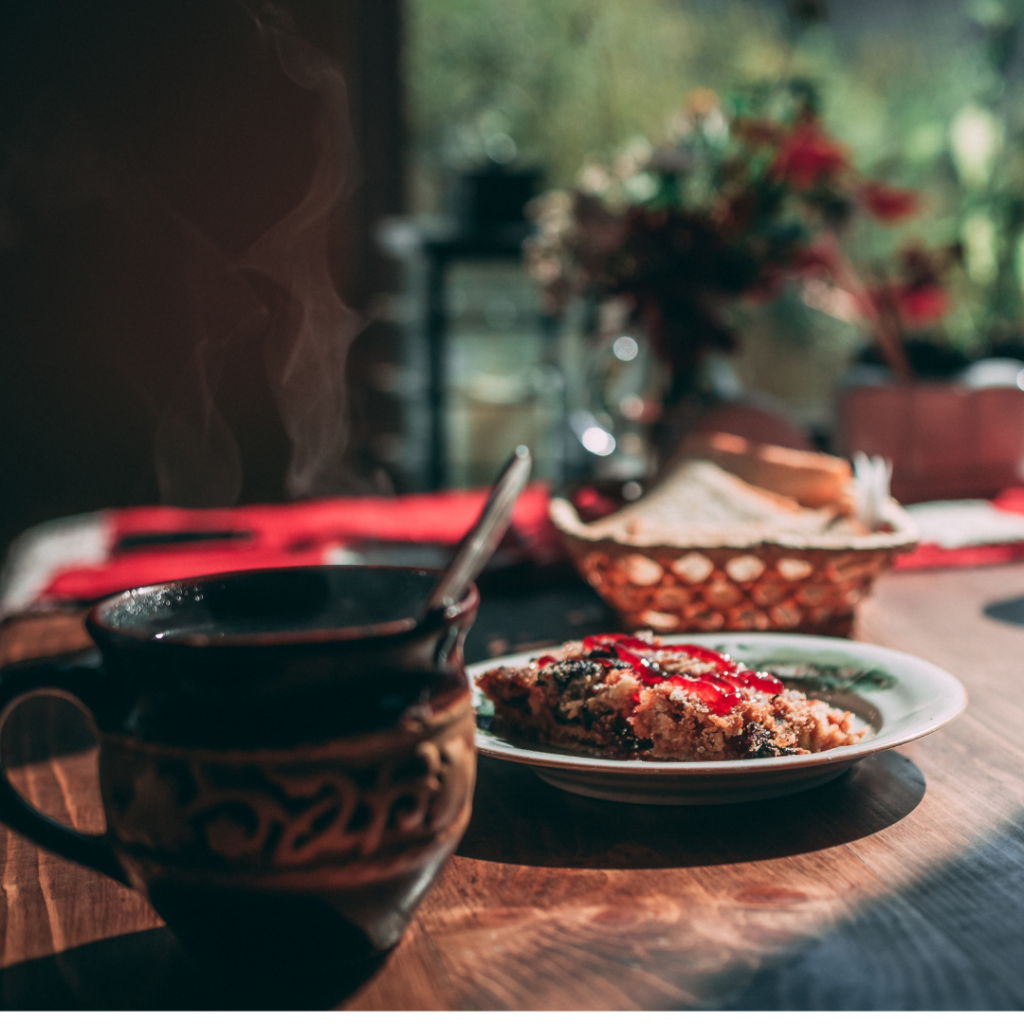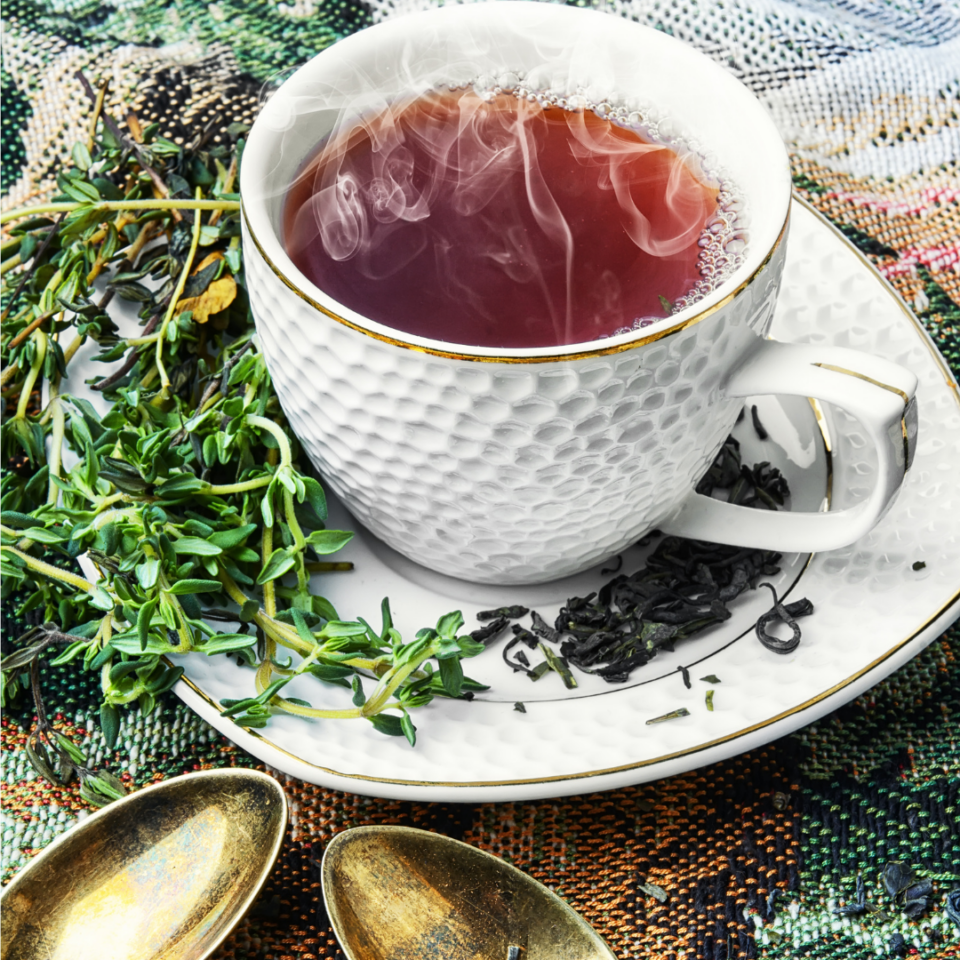How do you pair tea with food? Tantalizing 1 on 1

You might have heard of food being paired with wine a few times, especially the foodies out there.
Guess what else you can pair food? Tea!!!
Tea has similar tasting notes like wine and all the flavor to make your food that much more enjoyable.
So, sip on your nice cup of tea while I spill the knowledge.

What is food pairing?
If you are new to the whole idea of food pairing, here’s a quick breakdown. Let’s start with the basics: the Oxford Dictionary defines pairing as “An arrangement or match resulting from organizing or forming people or things into pairs.” If we take that one step further, Food Pairing, is combining multiple foods with similar aromas to create a pleasant taste.
Some great examples include tea and English muffins with fruit, strawberries and chocolate, or beer and pizza (okay, maybe not the last one). Believe or not, there is a whole science community dedicated to developing food pairings with graphs and charts.
Food pairing is a great way to test out your taste buds to get the full flavor and experience of your food. It’s fun, simple, and a great way to find something new and interesting.
What Are Tea Tasting Notes?
If you are a wine drinker, the term notes may sound familiar, if not, here’s an explanation. Notes are detailed descriptions of what a tea tastes like. The four main tea tasting categories are:
- Aroma,
- Flavor,
- Mouthfeel (texture), and
- Aftertaste.
Let me just say that not everyone will taste the same cup of tea the same way. One may taste an earthy, full bodied and a robust flavor while someone else may taste something completely different. A lot of factors go into how a tea tastes including water, water temperature, steeping time, and more. And let’s not under estimate how all of our tongues are different!
Tasting notes is truly the mental association between the flavors of the tea and something else. Someone may taste a tea and describe it as “The aroma was vegetal and soft with a toasted nutty flavor. Overall, it is refreshing to the palate.” This person’s opinion doesn’t mean that the tea tastes exactly like that, but reminds them of those notes.

What Are The 4 Main Tea Tasting Categories?
I mentioned the categories earlier, but let’s take a deeper dive into each one:
Aroma
According to one study, 90% of what is perceived as taste is actually smell (source). If you don’t believe me, try smelling the dry leaves of the tea before you steep it and then smell the liquid while steeping. You’ll notice that the aroma generally builds up to the same aroma as the dry tea leaves and will eventually reduce if you steep too long.
Tea drinkers that get into the practice of understanding how the tea aroma changes while steeping will eventually begin to determine the steeping time to create their preferred flavor or potency.
Key Aroma terms: floral, fruity, vegetal, spicy, sweet, earthy and nutty.
Flavor
Taking a deep breathe before you drink your tea is a great way to expand the flavor. Believe it or not, but slurping your tea is the best way to allow oxygen into the tea as you drink. Forget about what your mother said! Slurping releases more flavor compounds and allows the tea to coat your entire palate getting the full potential. When you think of flavor, think of it as a detailed or more in depth description of aroma. Example: The aroma of this tea is fruity and has a flavor of a tangerine.
Key Flavor terms: full bodied, rich, minerality, savory, citrus, cinnamon, malty, sage, licorice root cucumber and so much more.
Texture
Texture is simply how your mouth feels when drinking. Does the tea leave your mouth feeling dry like a red wine? Some teas feel creamy or smooth while others just simply go down without a trace. Some teas, which contain herbs, leave a cooling sensation.
In order to receive the best texture after your first slurp breathe out through your nose and focus. Think about how your mouth feels to re-engage your sense.
Key terms: cooling, dry, creamy, tingle
After Taste
After taste is the flavor that lingers in your mouth after you are done slurping your tea. Oolong teas have an aftertaste that sometimes lingers for up to an hour or more depending the person. Other teas don’t have much of an after taste at all or can simply be eliminated by eating something.
For many, the after taste is what people remember from a food. If it is good, people generally tend to want more. If bad, well, when is the last time you wanted something more that left a bad taste in your mouth?
Key terms: Sweet, strong, bitter, astringent, light
What Are Some Examples Of Tea Pairing?
Now that you know how to fully taste your tea, let’s step outside of your comfort zone and explore! Remember to have fun with this, use your imagination, and take nice slurps.
Purple Tea pairing:
- Breakfast – Mexican quiche
- Brunch – Sweet chocolate
- Dinner – Blackened grilled tofu or jerk chicken with mashed potatoes
- Wine – Full-bodied Cabernet Sauvignon or alternating with a Merlot
Shi Feng Dragonwell pairing:
- Breakfast – Melons and rice
- Brunch – Dark chocolate
- Dinner – Light stir-fry or pan-fried turkey
- Wine – Riesling and cranberry scone or infused Chardonnay
Citrus Globe Pu-erh pairing:
- Breakfast – Asian pears, persimmons, and berries
- Brunch – Original scone with dark chocolate
- Dinner – Vegan spicy tempeh sandwich or firecracker chicken with brown rice
- Wine – Pinot Noir or Champagne
Thank you so much for taking the time out of your day to read my blog. I truly hope this was insightful.
Until next time stay happy, laugh, and love genuinely.
stay #outwoken
